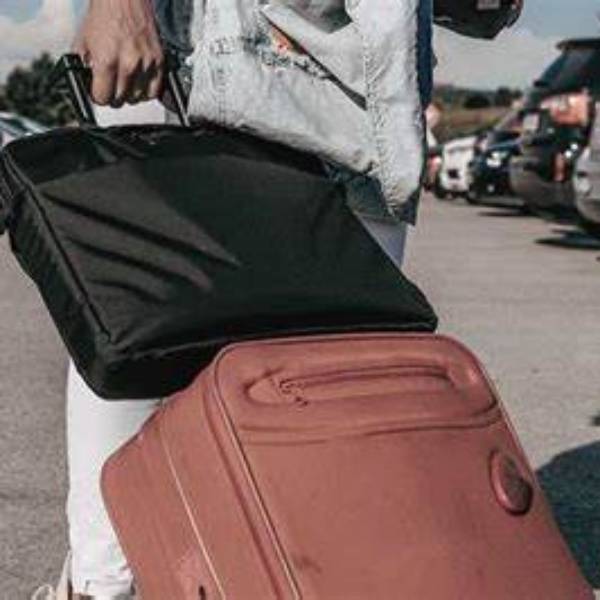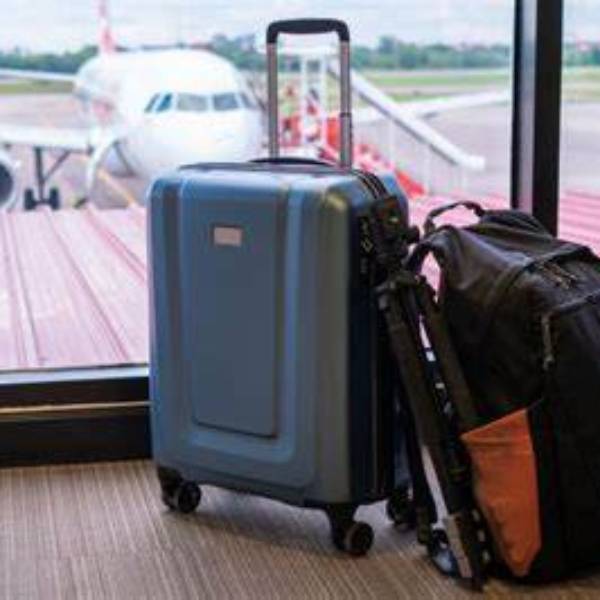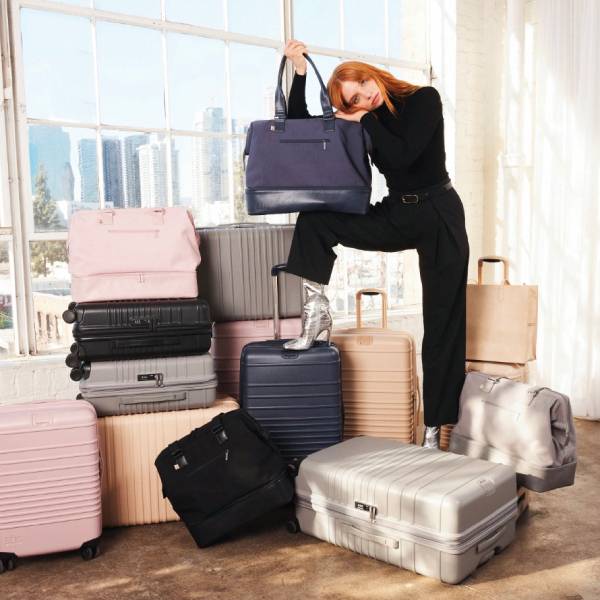Understanding travel regulations is vital for a smooth journey. Many travelers often misunderstand the difference between carry-on and personal items. Knowing the distinctions can help avoid hassles at the airport. This article will clarify the difference between carry on and personal item, focusing on their definitions, sizes, and travel implications.

Definition: Difference Between Carry On and Personal Item
Understanding Carry-On Luggage
A carry-on bag is essential for air travel. Travelers use it to keep their necessities close during the flight. Most airlines enforce strict size limitations for these bags. Passengers must measure their carry-ons before arriving at the airport. If a bag exceeds the allowable dimensions, staff may require them to check it. Therefore, it is wise to familiarize yourself with your airline’s policies. This preparation helps you avoid unnecessary delays during boarding. Additionally, a well-packed carry-on can enhance your in-flight experience. You can include items like snacks, medications, and entertainment.
The Importance of Personal Items
A personal item complements your carry-on bag. It must fit beneath the seat in front of you, providing easy access during the flight. Common personal items include purses, backpacks, and laptop bags. These smaller bags allow you to carry essentials without placing them in the overhead bin. Understanding what constitutes a personal item is crucial. Many travelers confuse personal items with carry-ons, leading to complications during boarding. Therefore, each traveler must know their airline’s specific guidelines. This knowledge prevents misunderstandings and streamlines the boarding process. By packing wisely, you can ensure a smoother journey. Thus, awareness of both carry-on and personal item regulations makes air travel less stressful. Make knowledgeable choices and enjoy a hassle-free flight experience.
Size Matters: Difference Between Carry On and Personal Item
Understanding Carry-On Luggage

When you travel, knowing the difference between carry-on luggage and personal items is crucial. Airlines enforce specific size restrictions for both types of bags. Typically, a carry-on bag measures around 22 x 14 x 9 inches. However, different airlines may vary these dimensions, so always check your airline’s policies. Carry-on bags fit in overhead compartments, providing you with easy access during flights. Therefore, choosing the right carry-on ensures a hassle-free travel experience.
Choosing the Right Personal Item
In contrast, a personal item is usually smaller than a carry-on. Most personal items measure approximately 18 x 14 x 8 inches. These bags often fit under the seat in front of you, allowing quick access to essential items. Examples of personal items include backpacks, purses, or laptop bags. Consider your travel needs when choosing a personal item, as it may hold important belongings like electronics or medication. Additionally, having both types of bags can enhance your travel comfort. Choose wisely to maximize your storage potential while adhering to airline guidelines. Checking the specific rules regarding sizes can save you from last-minute packing mistakes. Prepare in advance, and enjoy a smooth journey. By understanding the differences between the two types of luggage, you can travel confidently and efficiently.
Weight Restrictions: Difference Between Carry On and Personal Item
Carry-On Weight Restrictions
Airlines enforce various weight restrictions for carry-on luggage. Passengers must adhere to these limits to avoid additional fees. Some airlines have stricter guidelines than others, so it’s crucial to verify. When bags exceed weight limits, airlines may charge hefty fines. Many travelers find themselves caught off guard by these fees. They often assume carry-ons are exempt from strict regulations. However, airlines actively monitor and enforce these rules. Therefore, passengers should scale their bags prior to check-in, ensuring compliance.
Personal Item Flexibility
In contrast to carry-ons, personal items often enjoy greater flexibility. Most airlines allow personal items without strict weight limits. While some airlines do set general guidelines, the rules are less stringent. A personal item can include a purse, a backpack, or a laptop case. This flexibility allows travelers to carry essential items conveniently.
When planning your trip to Europe, it’s essential to keep in mind the airline’s carry-on size restrictions, but remember that personal items usually offer more leeway, allowing you to bring along your necessary belongings with ease.

Still, passengers should review their airline’s specific policy to avoid misunderstandings. Some airlines may have size constraints even if weight isn’t a concern. Checking these guidelines ensures a hassle-free boarding experience. Overall, understanding both carry-on and personal item restrictions helps prevent unexpected charges. Passengers should prioritize awareness to enhance their travel experience.
Purpose: Difference Between Carry On and Personal Item
Understanding the purpose of each bag helps clarify the difference between carry on and personal item. Carry-ons generally hold most of your travel essentials. Think of clothing, shoes, and toiletries. Personal items, however, hold valuables and essentials you want close. Your laptop, passport, or medications usually belong here. Knowing the purpose helps you pack efficiently. When traveling, understanding the distinction between personal items and united carry on bags ensures you keep your essentials organized, with valuable items readily accessible for a smoother journey.
Packing Tips: Difference Between Carry On and Personal Item
When packing, consider the difference between carry on and personal item. Start with your carry-on. Focus on packing clothing, toiletries, and less accessible items. Ensure you check and adhere to size restrictions. Use travel-sized containers for liquids. Then, turn to your personal item. Keep essentials within easy reach. This may include documents or anything you might need during the flight. When preparing for your trip with Austrian Airlines, be mindful of the carry on size restrictions while packing your clothing and essentials, ensuring you meet their guidelines for a smooth journey.
Security Checks: Difference Between Carry On and Personal Item
Travelers need to recognize the difference between carry-on luggage and personal items. The Transportation Security Administration (TSA) regulations apply equally to both types of bags. Carry-ons must adhere strictly to the 3-1-1 rule for liquids. This rule permits only 3.4 ounces per container. Therefore, travelers should check their liquid containers before arriving at the airport. Properly packing these items avoids delays at security checkpoints and ensures a smoother experience.
Tips for Efficient Packing
While personal items generally face less scrutiny, passengers still need to keep them organized. Placing essential items, like electronics or travel documents, at the top allows for quick access. By doing so, travelers can expedite their passage through security. Moreover, efficient packing minimizes the chances of forgotten items. Using packing cubes or pouches helps maintain order in both carry-ons and personal items. A thoughtfully packed bag enhances the entire travel experience. Remember to plan ahead and check TSA guidelines regularly. Staying informed plays a crucial role in a stress-free journey.
Boarding Strategy: Difference Between Carry On and Personal Item
A thoughtful boarding strategy considers the difference between carry on and personal item. Airlines typically board passengers by group or seat number. If you know your carry-on is larger, prioritize boarding efficiently. Place it in the overhead compartment. Keep your personal item accessible for during the flight. A good strategy minimizes time spent organizing once on the plane.
Conclusion: Difference Between Carry On and Personal Item
In conclusion, understanding the difference between carry on and personal item enhances your travel experience. Each bag serves a specific purpose and has different size and weight restrictions. Knowing these distinctions can reduce stress at the airport. Whether you’re a frequent flyer or occasional traveler, pack wisely. Familiarize yourself with airline policies and packing tips. A smooth journey awaits with the right knowledge.